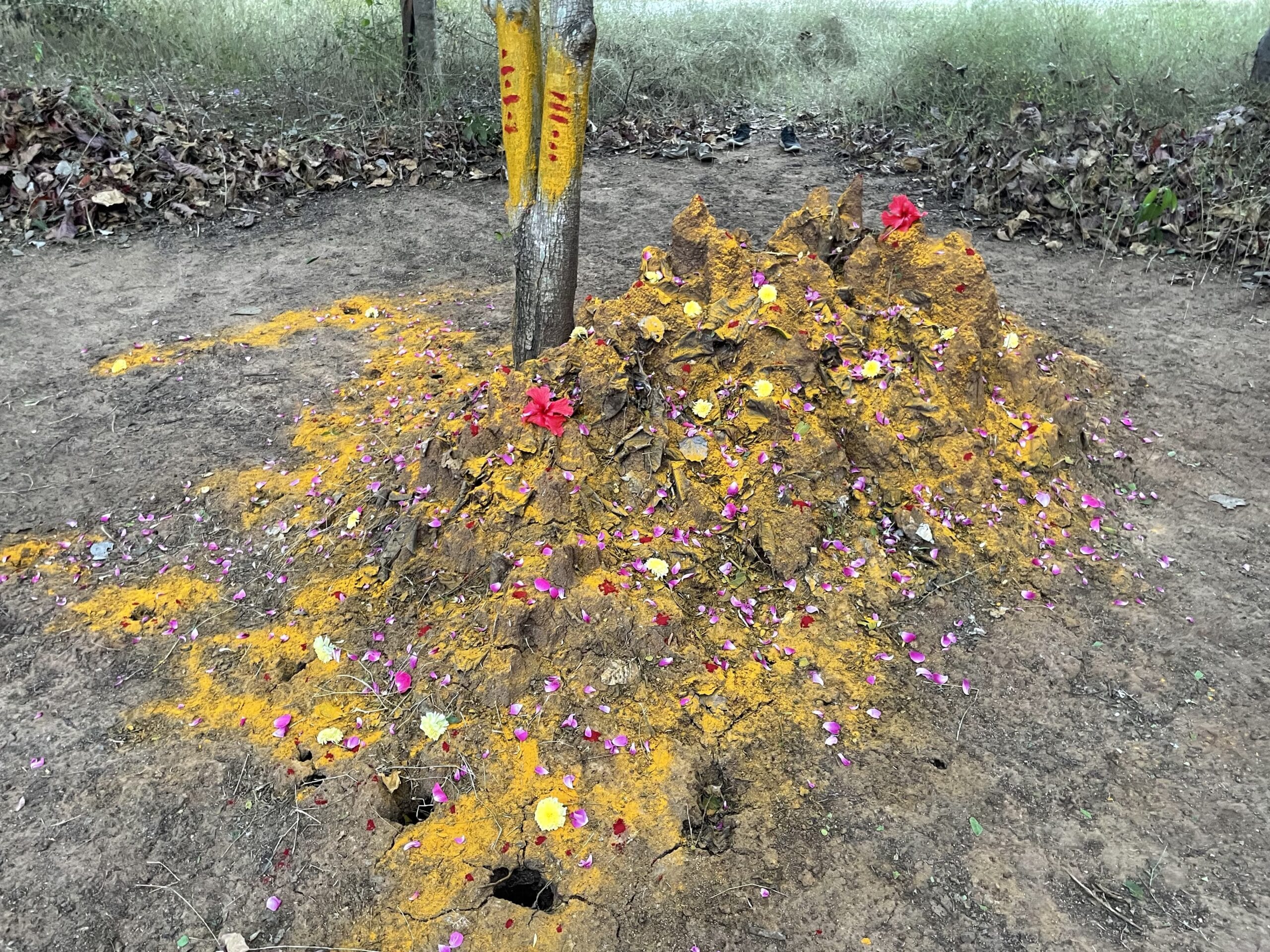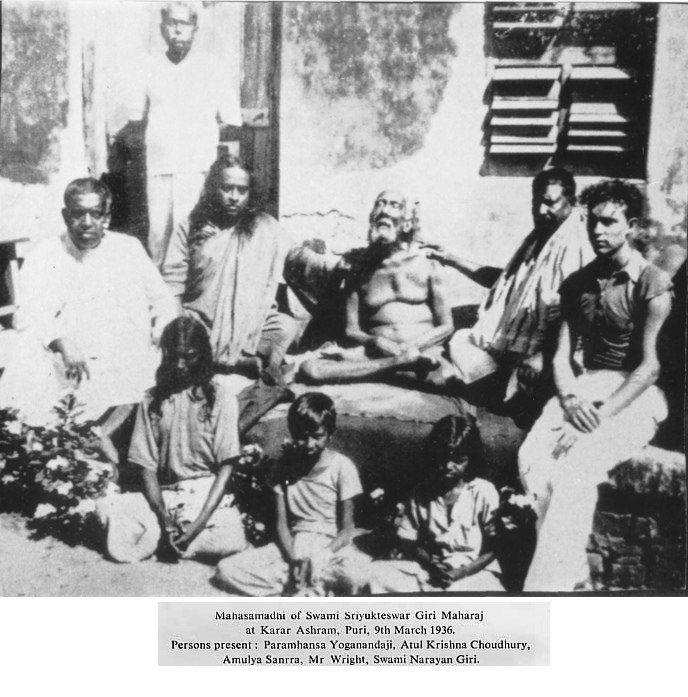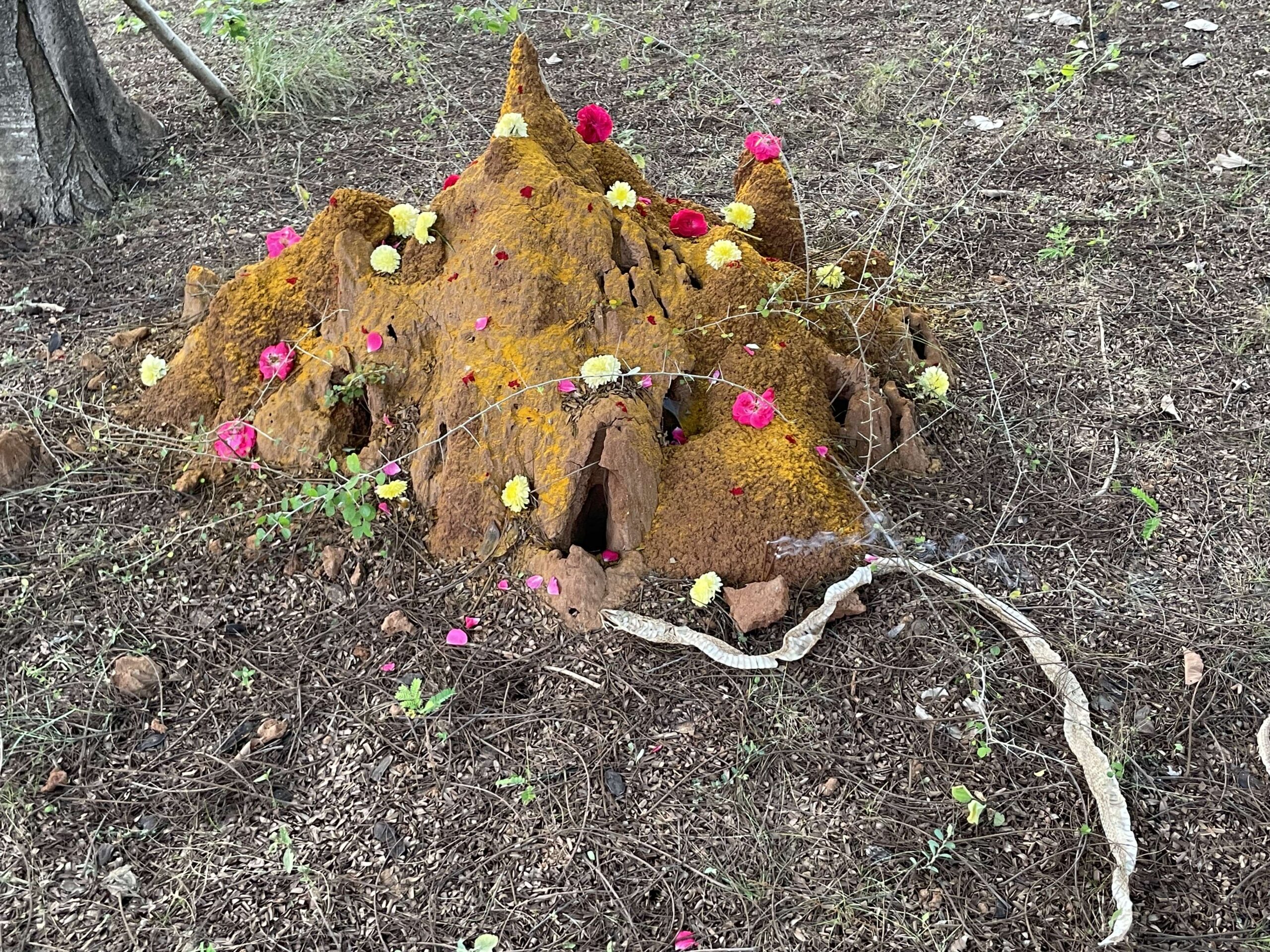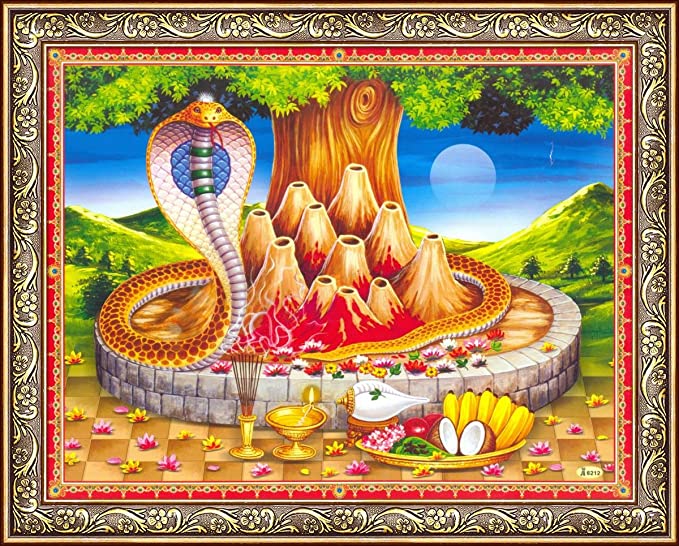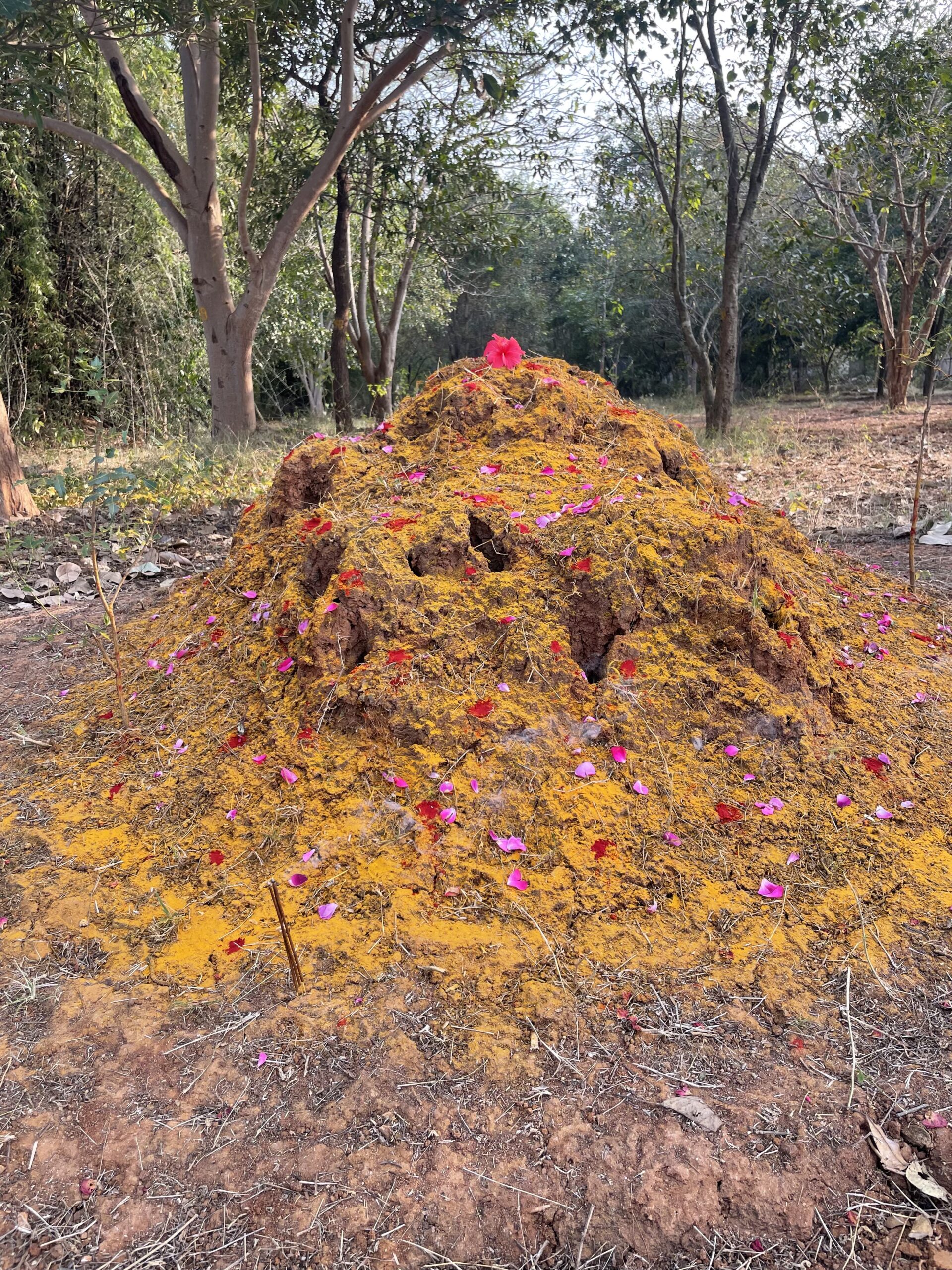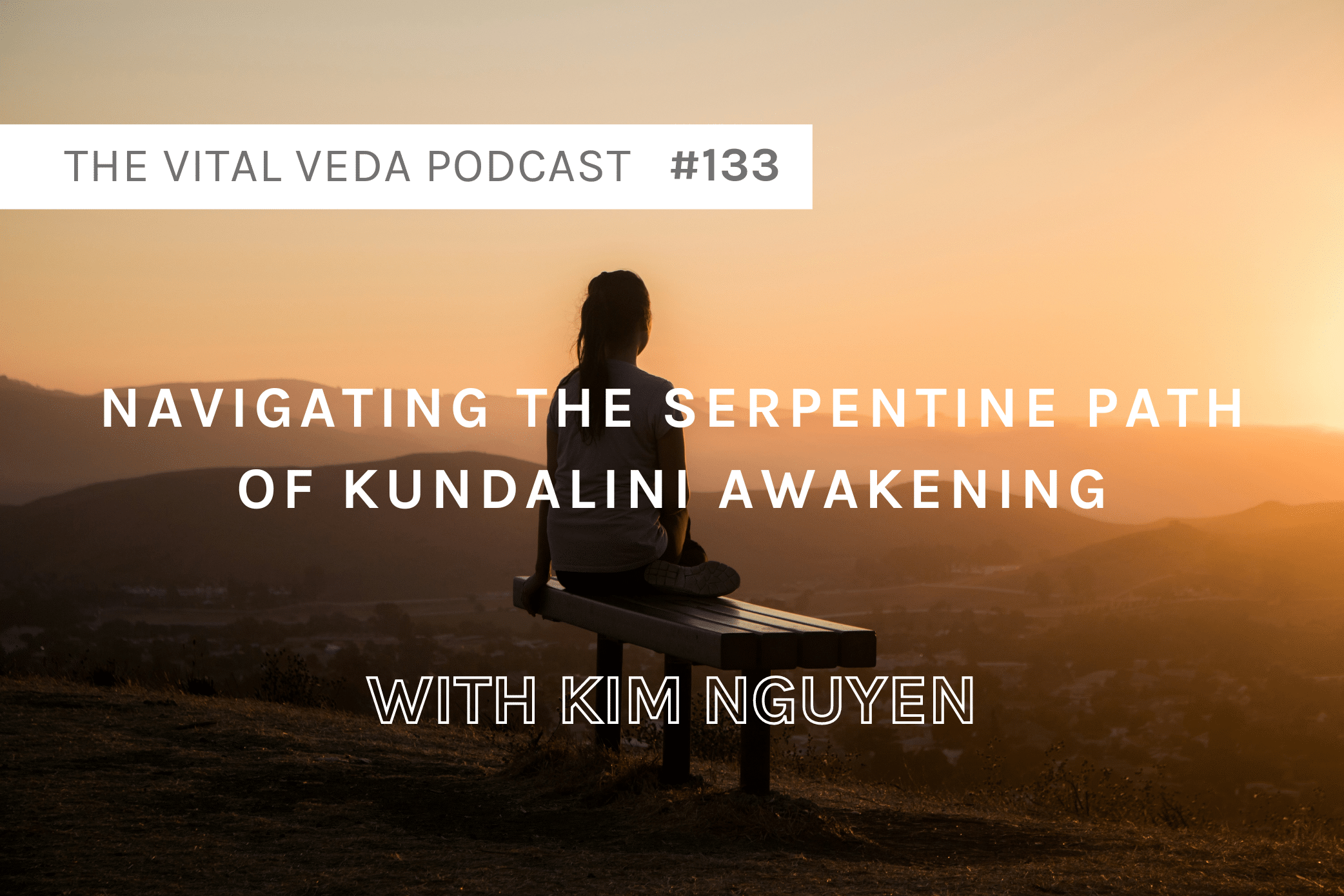Written by Pedro Del Riccio
Anthills, also known as Vāmalūra in Sanskrit or putthu in Tamil, are not only considered sacred in India, but as real manifestations and embodiments of the Divine.
The place where an anthill emerges is automatically deemed sacred land by those who understand the deep significance & importance of these earthly palaces.
There are many reasons for which Anthills are considered expressions of Divine, here’s some of the wisdom I could find surrounding these holy putthus.
ANTHILLS AND MAHĀSAMĀDHI
It is popular belief in India that wherever an anthill of this nature manifests, an enlightened yogi has attained mahāsamādhi, the state where the realized soul consciously makes the decision to drop the body and become liberated.
Anthills then emerge, and act as beacons and spreaders of the sattvic prana (life-force) that that yogi has left behind on this earth.
HOLY MEDICINAL HONEY
In some special locations in India, those who are local to certain areas can identify putthus inside which bees choose to build their beehives.
The honey that those bees produce is believed to have very special medicinal qualities. It is said that this holy honey can be used to treat cancer and various other serious diseases.
THE NAGAS (CELESTIAL SNAKES)
Another reason to which the holiness of these anthills is attributed is rooted in Vedic lore and philosophy.
It is said that the Nagas (a divine race of cosmic snakes) reside within these anthills (as you can see in the photo, we found the shedded skin of a cobra snake right at the entrance of one putthu).
The nagas are described as a powerful, pure & splendid race of beings that can assume their physical form either as human, partial human-serpent or the whole serpent.
Their domain lies in an enchanted underworld filled with gems, gold and other earthly treasures called Naga-loka or Patala-loka. They are also often associated with bodies of waters — including rivers, lakes, seas, and wells — and are guardians of great treasures.
As explained to me by my Guru, since there is no karma in Naga-loka (the capacity to perform good or bad actions) the only way for the nagas to attain moksha or liberation from the life & death cycle is for them to come and do their sadhana (spiritual practice) on earth (also known as Bhumi-loka).
These divine snakes that reside within the putthus are also considered to be embodiments of the Kundalini Shakti (divine feminine energy which flows in the spinal cord), and therefore of the Divine Mother herself, also known as Adi Parashakti or Adi Narayani.
Encountering Naga Maa (The Mother Naga), especially during Naga Panchami, is a very rare and auspicious experience that is said to bring many blessings.
Doing puja (Vedic worship ceremony) on a putthu is believed to bestow huge blessings to the one who performs it. And worshiping the Goddess after reverently offering milk or ghee to these holly anthills and walking around them 9 times with prayers in one’s heart is said to reduce grievances, provide protection and bestow the boon of children to women who do not have any.
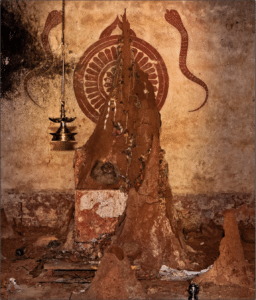
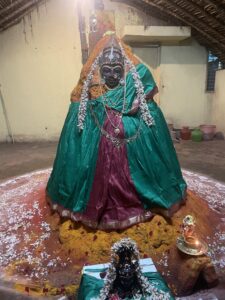
The Soil of The Putthu
The soil taken from these anthills is believed to be very holy and endued with a very special and cherished pranic force.
In Ayurvedic siddha medicine, this holy soil is used to prepare medicines & for external treatments as well. This earthly medicine is believed to be very effective to reduce cholesterol.
There are special places in India, like the Vaitheeswaran Koil temple in Tamil Nadu, where Lord Siva is worshiped as Idyanathar or Vaitheeswaran meaning the “God of healing”, and the earth taken from different putthus is provided as Prasad (devotional offering) to devotees.
I’ve even heard from a pandit (Vedic Priest) that there are certain temples that use the soil of the putthus to make Siva Lingams.
Doing Puja To A Putthu & The Nagas Residing Within
I had the blessing & privilege of performing puja to several putthus during my last stay in South India and can personally tell how deeply rewarding & powerful of a happening it is.
It not only is a deeply grounding experience that connects one with Mother Nature, but being able to pay homage and worship to the abodes of such magnificent beings is a very enlightening experience in itself.
Fridays are the most auspicious days to perform worship on these anthills.
A simple puja consists of:
-
Chanting mantras during the whole process
-
Doing turmeric (haridra) & kumkum archana – offering of turmeric and kumkum powder to the anthill.
-
Offering of flowers
-
Offering of incense
-
Offering of milk (ideally) or ghee.

